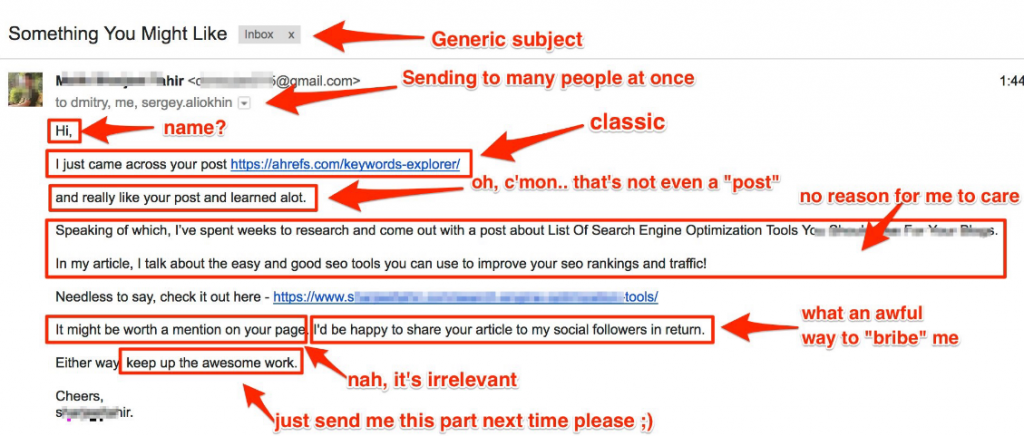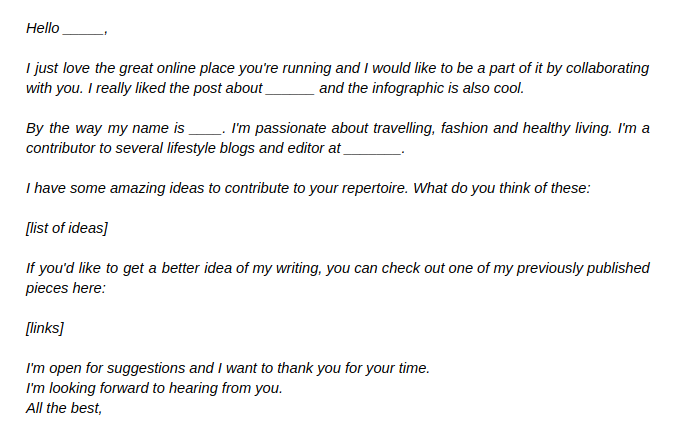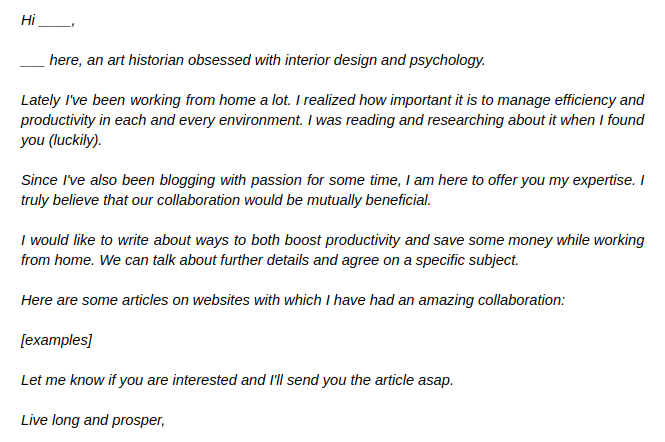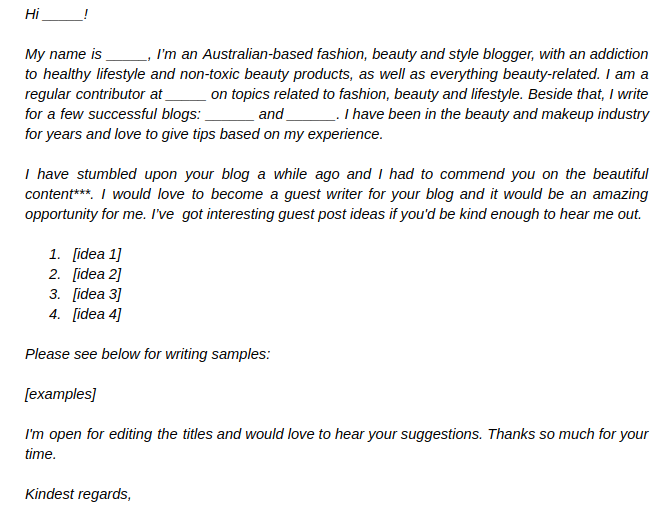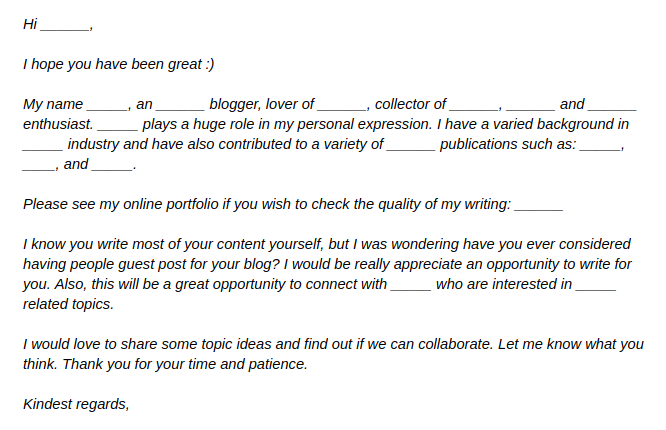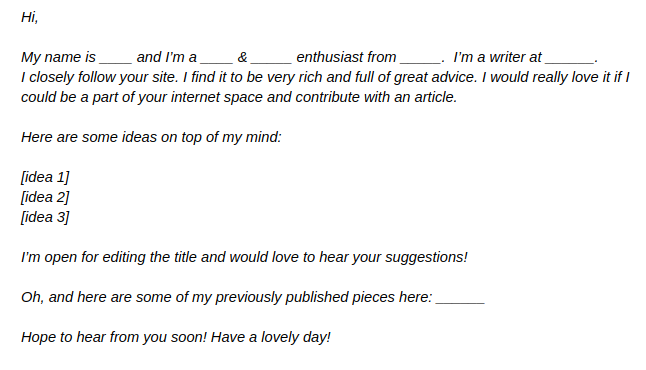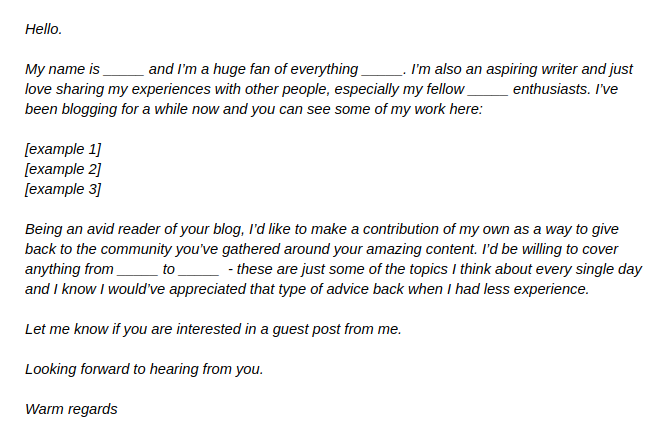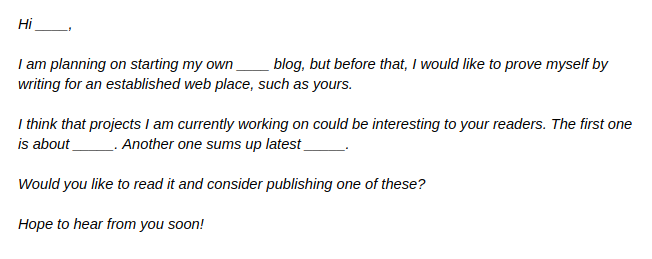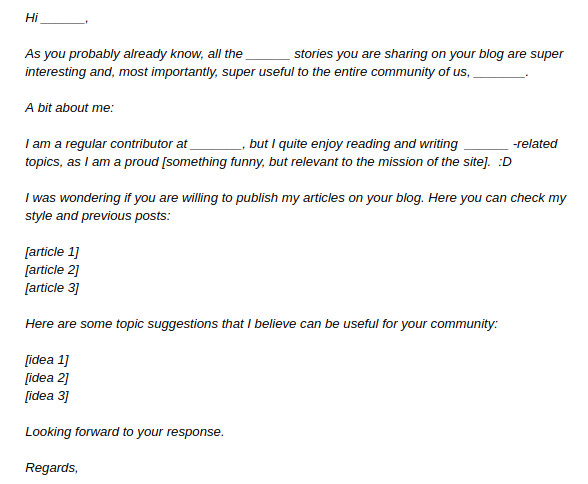(Updated)
Now that Dibz has provided you with tons of amazing link building opportunities, it’s time to dive into the second phase of the process and transform those rich prospects into actual links.
Thank you for reading this article.
Don't forget to check our uber mega awesome keyword research and mapping AI tool that is free! (for now...:)
There are a lot of different practices out there that could help you make the most of your link building efforts, but none quite as efficient as publishing your content on various relevant sites across the Web.
The Power Behind Efficient Guest Blogging
We all know that guest blogging is the best way to build natural links. These backlinks can help you skyrocket your domain authority, and grow referral traffic quickly by leaning on a popular and relevant website. However, it’s still fairly difficult to precisely calculate your chances of earning that sweet juicy link.
It doesn’t really matter how good or experienced you are – sending outreach emails will always be a gamble. For most writers and marketers, it’s still not a practice through which they can actually obtain some significant ROI.
Why? – Because you never really know who’s reading your emails.
Even though most digital marketers tend to properly do their homework before reaching out to a certain person or brand, in most cases – everything still boils down to pure dumb luck.
Not great, right?
Why is that, anyway? With all these amazing email marketing tools around, why is luck still a decisive factor in this equation? In this day and age, why aren’t we able to precisely calculate our chances of getting published on certain domains, before reaching out to a web admin, editor or influencer? – The simple truth is that you don’t actually know the recipient of your emails. Yes, you know their names and credentials, but that’s it.
As an actual living and breathing person, they still remain a complete mystery to you, in most cases.
You still have no idea what they like, dislike, think and feel at the moment you’re reaching out to them. Maybe your correspondent is a morning person who hates receiving emails and talking about business past 2pm. Maybe it’s the other way around. Maybe they’re just busy at that specific moment and your email isn’t a priority for them. Maybe you’re using the wrong tone in your message. – These are just some of the things you can never know in advance about the person you’re trying to win over via email.
This is kind of bad, ‘cause these sorts of details have the power to significantly influence the success of your guest blogging efforts.
Having said all that, it goes without saying that there’s no “foolproof outreach strategy”. It still doesn’t really exist.

Despite the fact that a lot of today’s marketing experts use a wide variety of tools that can help them figure out who, how, and when has opened their message, there are still tons of important details that remain cloaked in darkness.
Even though outreach is still a process during which a lot cannot be automated, there are people who constantly defy the odds and absolutely crush it in this field.
Here at our agency, guest blogging still remains one of the key strategies for building high-quality backlinks. Every single day, we send dozens and dozens of outreach emails from our office, and they are the messengers that actually claim those desired links. This month, our writers have been published on an insane numbers of websites.
We’re talking about four figures here.
How did we manage to accomplish such a thing? By finding actual link building opportunities via Dibz and creating amazing, personalized messages that actually get people to open your emails, read them, and acknowledge your worth.
In order to help you maximize your guest blogging efforts, we have decided to interview our link builders and get them to share some of their best-performing emails.
Before we dig deep and focus on the Do’s, it is important to first get the Don’ts out the way. In our agency, newbies are always first taken through the don’ts of this phase of link building, so they’d instantly understand what practices to avoid at all cost:
Things You Should Never Do When Sending Outreach to Web Admins and Influencers
Lesson 1
Outreaching to influencers and site owners is all about finesse and personalization. People fail in this part of the SEO game because they get greedy and lazy.
A couple of days ago, Tim Soulo from Ahrefs shared this image on his private Twitter account.
It’s an example of a notoriously bad outreach email:
As you can see in the image above, every mistake made here originates from the desire to get as many people as possible to “bite” on an uninspiring hook.
Naturally, that kind of approach almost always results in failure.
A lot of newbies tend to send outreach emails in bulk. They compile a list of resources and just shoot the same generic message to all of their prospects.
Most link builders who actually have some experience in the industry, know better than to attach multiple recipients to a single message. But, just like the newbies – a lot of their work doesn’t inspire people to message them back. Due to their lack of sincerity and understanding of the recipient of their outreach emails, the intent behind the messages gets easily unmasked and so the entire work becomes compromised.
Every detail counts here.
As Tim pointed out in his comments about the notorious outreach – there’s no need to get overly descriptive in your outreach emails. Especially if you’re pushing certain information on a subject that’s irrelevant to the person you are contacting.
If you’re targeting someone who has a popular blog, it’s safe to assume that your recipient will probably be aware of your intent. He or she is bound to be receiving tons of outreach emails everyday. Your prospect already knows how the game works, so you shouldn’t waste your time selling ice to an Eskimo.
The best option here is to cut down on the BS and focus on providing value.
Lesson 2
If you want a link, you’ll have to earn it. Simple as that. If you have the time and resources, do your best to produce something unique. If you have something new to report, you should make that the heart and soul of your pitch.
Top bloggers and influencers will surely appreciate a heads up.
Sites with big audiences are in constant need of high-quality content. Even though they are often hard to impress, there’s always a gap there in need of filling.
Research your topic well before pitching it to your prospect, and be transparent about what exactly is it that you can do for them. Articulate your idea in a way that immediately grabs your recipient’s interest and makes him or her see that you’re not just another scam artist.
Lesson 3
No copy-pasting!
Even though the subject of this blog post is built around the phrase “outreach templates”, that doesn’t necessarily mean that you should send the same email to 100 or more recipients and expect every single one of them to provide you with a link.
The point of this article isn’t really to give you copy-paste material, but to help you understand how to script your emails in order to make them feel legit. Don’t just focus on the exact words – focus on the narrative and try your best to understand the structure, because that’s the only thing that can truly help you improve your success rate in this part of the process.
Now that’s clear, let’s focus on the outreach examples themselves.
DISCLAIMER:
Before you start reading everything listed below, please keep in mind that every single one of these messages was created for a particular target and client. Try not to obsess over the niche and industry we’re targeting here, and just focus on what’s at the core of the content that’s being presented in every one of these examples.
Example #1: The Personal Introduction, Fueled by a Relevant Agenda

What makes this template great? – Apart from the obvious highly-personal approach that instantly demystifies the person on the other side of the conversation, it can easily be seen by everyone reading this email that the author has done her homework. She knows exactly whom she is targeting, what the site’s about, and what the editors consider to be great content.
Example #2: The Kind Word
Referencing existent, already-published content and recognizing its value in an email to the person who has published it can get you far in this game. Everyone loves hearing great things about themselves. You must never forget that.
Example #3: The Loose and Friendly Approach
The overall tone of your pitch can be your best friend or your biggest foe. Everyone who has been writing content for a living and trying to get it published all over the Web is familiar with the importance of presenting their agenda in a desirable tone and voice.
For example, if you’re trying to publish your content on an entertainment site, it’s in your best interest to pitch your idea in a more nonchalant manner. On the other hand, if you’re reaching out to a big business blog – then it’s logical to present yourself as a more serious figure.
Example #4: The Short and Sweet Pitch
Even though personalized emails work, sometimes you find yourself in a situation where you’re reaching out to people who don’t really love to read long, descriptive messages. All they want are the key points of your proposal. They instantly want to learn what is it that you’re “selling”, what’s the core value behind your pitch and why it is important for them.

Example #5: Break the Mold, Make Your Pitch Unusual and Memorable
Why does it work? – First and foremost, because it’s personalized and people don’t often receive these type of outreach emails. Especially those that end with: “Live long and prosper.”
Example #6: The Well-Researched and Highly-Contextual Pitch
As you can see from everything written above, our colleagues have really invested some genuine effort into researching the hell out of the target they’re trying to reach. They’ve analyzed the content, which helped them recognize that this particular blogger has a not-that-transparent interest in healthy lifestyle and non-toxic beauty products. This has inspired them to develop a special persona that really speaks volumes to the recipient.
Example #7: The “I’m Your Guy/Girl” Pitch
One of the major things that make this template so effective is the introduction part. As you can see, our agency staffer has invested some extra effort into presenting herself as the ideal type of person to write a guest post for this particular site. She compressed everything she needed to say about herself in only a couple of lines.
Plus, she provided the web admin with a sample of her writing and a genuine reason to consider giving her a contributor title on the site.
Example #8: A Simple, but Effective Stroking of Ego
Apart from being short, sweet and straight to the point – the best thing about this outreach is the simple stroking of ego.
Most link builders who fail in this part of the game usually go overboard with the praise. That often results in failure because most web admins see right through such slimy behavior.
Example #9: An Appreciative Fan and Fellow Enthusiast
Every line of this outreach works! It displays genuine interest in the site and it provides the admin with enough information for them to decide that the person behind this email is worth talking to.
This is a well-balanced outreach that doesn’t try to suck up to the admin, nor oversell the proposed deal. It’s just right. The recipient of the email is provided with enough subjects to choose from, and the sender’s backstory is convincing enough to get his foot in the door.
Example #10: A Chance to Shine
This is also a good approach, especially for those who don’t really have a big and diverse writing portfolio to show to their prospects. It strokes the ego quite gently, providing the admin with a significant sense of importance. This kind of approach is respectful and direct. It is humble and straightforward, and that’s why it often works.
Example #11: The Alternative Angle
For example, if you’re outreaching to a blog that writes about kids, but you don’t have any children of your own – it’s better to talk from an angle of an uncle or an aunt, then to lie about being a parent.
Same goes for marketing. If you’re targeting a site that writes about SEO, and your expertise is content marketing – pitch an idea that’s in sync with your skillset or current position in life. This particular approach works because it relies on simply being real with the site admin.
Example #12: The Perfect Tone and Voice
Best outreach emails are the ones that use the same tone and voice as the people you’re emailing. For example, if you’re outreaching to a site that writes about dog grooming – it’s a smart idea to put yourself in the shoes of a passionate dog owner. Use phrases like “my furry friend”, “baby”, etc.
As you can see in the part where our agency staffer talks about herself and her experiences – there’s a legitimate opportunity in this section to subtly hint that she’s a proud dog owner. “I am a proud mom of two babies, one of them being my dog. :D” – this is a sort of sentence that only a passionate dog owner would use in an email. In this particular scenario, understanding the lingo could help you establish a great level of authenticity, which will certainly help you earn those links.
To Wrap Things up – What are the Key Takeaways Here? What is the Formula Behind Crafting an Outreach Email Template?
First and foremost, always lead with value.
As you can see from every example listed in this text – before you even start thinking about getting your post published on a certain site, you must first figure out how to avoid the infamous trash bin.
The only way you can do that is by crafting messages that instantly showcases who you are, what you want, and what you can do for them.
Always try to highlight what’s in it for the site itself. You need to know your audience, figure out how busy they really are and learn what type of pitch or proposal will instantly generate their interest.
Focusing on every example listed in this article, your perfect outreach email template should look something like this:
1. Pick an appropriate tone and voice for your message;
2. Open with a short and sweet bio that instantly speaks volumes to the recipient;
3. List your credentials;
4. State your case and describe why should they even continue to read your email;
5. Pitch your ideas (always send more than one) in a clear and intelligent manner;
6. Close with a statement that gives your recipient a definitive course of action to take once they finish reading your email;
That’s it.
Thank you for taking the time to read this post. I hope it has helped you understand how to improve your link building efforts and drive more ROI through sending outreach emails.
That’s it for now,
See you again soon!



